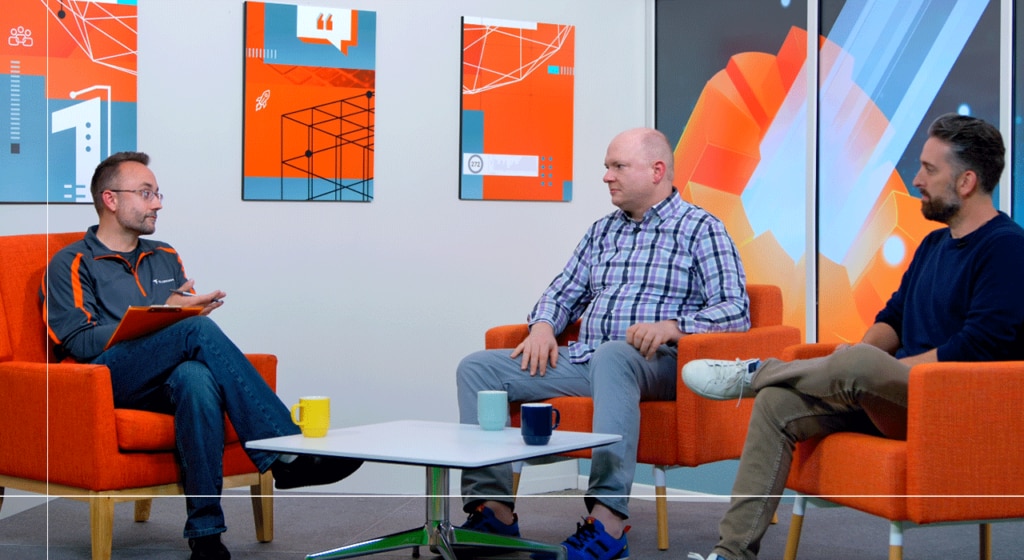1. Operational Resilience Is Strengthened With Strong Incident Response
SolarWinds has been helping companies achieve operational resilience for 25 years, and on March 3 of this year, we significantly strengthened our capabilities across the SolarWinds® Platform by acquiring Squadcast, a complete, end-to-end incident response solution. Incident response involves having a well-coordinated plan, the correct tools, and skilled people to quickly resolve issues that disrupt normal business operations. Squadcast includes features such as:
“Reliability is at the heart of every digital business, and ensuring uptime while reducing alert fatigue is critical for high-performing teams,” said SolarWinds Senior Director of Product Marketing, Abigail Norman. “Squadcast provides a unified approach by combining intelligent alert routing, automation, and AI-driven insights, empowering teams to proactively resolve incidents with speed and efficiency.”
2. Aligning Business and Technology Is Critical to Success
Business leaders must understand the technological implications of their decisions, while technology teams must be aware of the impact of their actions on the business. Special guest Torsten Volk, Principal Analyst at the Enterprise Strategy Group, said: "You need to know what your business wants to achieve, and you need to know what your technology does currently. The business guys should understand the impact of technology on what they're doing as much as the technology guys understand the business impact." When business leaders grasp the technical challenges, they can set realistic goals; when technology teams understand business objectives, they can prioritize delivering solutions that drive value.
3. Tool Sprawl, Siloes, and Fragmentation Are Communication Issues
Volk went on to discuss how common IT headaches like tool sprawl and siloed operations often stem from communication issues: "The people who select the tools and document the processes are not necessarily the people who do the work. The developers come and say, ‘Hey, do you want me to meet that deadline or not? Then you’d better give me my tools. And I’m just going to install this, and I’m going to install that. Oh, yeah, for observability, you know, we also need this, this, and that.'"
Rapid advancement in technology exacerbates the issue. "IT departments go through these projects that you brought up, thinking about a problem as a point in time versus thinking about future problems. And so I think they go out and buy the tools that solve those needs today without thinking that through. And then, you know, two, three years, even a year down the road, with how fast things are advancing, those tools can no longer solve the problems they face today. It comes down to a [company] cultural issue as much as a tool issue."
4. AI Continues to Become More Central to Effective IT Operations
Integrating artificial intelligence (AI) into IT management transforms how organizations handle complex tasks, furthering operational resilience from troubleshooting to database optimization and incident response. We discussed a number of ways SolarWinds AI is being put to use in the SolarWinds Platform:
- AI Root Cause Assist: SolarWinds AI Root Cause Assist uses generative AI to automatically identify and document the root cause of alerts, reducing the mean time to resolve (MTTR).
- AI Query Assist for Database Observability: SolarWinds AI Query Assist optimizes SQL queries using generative AI, improving database performance and efficiency.
- AI Auto-Generated Runbooks: SolarWinds AI Auto-Generated Runbooks convert text-based standard operating procedures into actionable workflows, centralizing information for better service management.
- Intelligent Noise Reduction: The Squadcast intelligent noise reduction uses AI to suppress low-priority alerts and deduplicate incidents, improving focus on critical issues.
SolarWinds VP of Product Management Jeff Stewart called for careful consideration when implementing AI: “How do we identify AI use cases that are actually valuable and not just something to talk about?” The measures highlighted above have been strategically implemented to deliver genuine value to our customers.
5. Full-Stack Observability Is the Foundation of Operational Resilience
Without a holistic view, true resilience is unattainable. Volk wrapped up the conversation by bringing things back to basics: "What is the stack? What is the operating system? And if you don't have that visibility, that's a big problem. (Organizations) often don't even know that they don't have it, or they believe they have it, but then you drill a little bit deeper, and you see they wouldn't have those issues of unpredictability if they had full-stack observability."
Ready to learn more? Read how an operational resilience strategy can help you align people, processes, and technology to simplify your IT environment.




